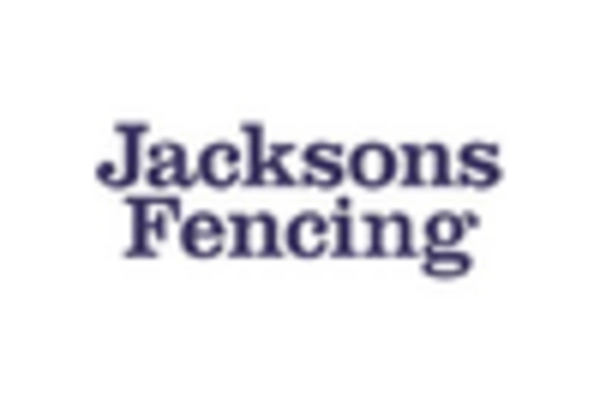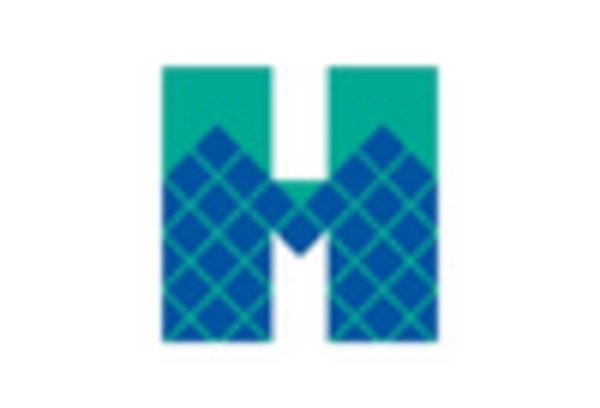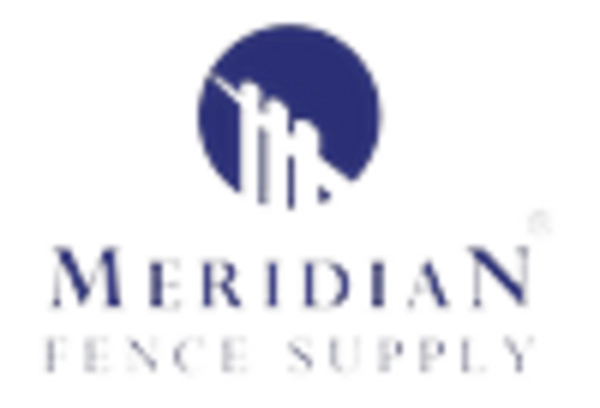Increased Security Concerns
In South Korea, the heightened awareness of security issues is driving the fencing market. As urban areas become more densely populated, the need for effective security measures has intensified. This trend is reflected in the rising sales of security fencing products, which are expected to account for a significant share of the market by 2026. The fencing market is likely to benefit from the growing demand for high-security solutions, including electric and barbed wire fencing, particularly in commercial and industrial sectors. Additionally, the increasing incidence of property crimes has prompted both residential and commercial property owners to invest in fencing as a deterrent, thereby bolstering market growth.
Rising Construction Activities
The ongoing expansion of the construction sector in South Korea appears to be a primary driver for the fencing market. With urbanization and infrastructure development on the rise, the demand for fencing solutions is likely to increase. In 2025, the construction industry is projected to grow by approximately 5.2%, leading to a heightened need for fencing products in residential, commercial, and industrial projects. This growth is indicative of a broader trend where safety and security measures are prioritized, thus enhancing the fencing market's prospects. Furthermore, the government's investment in public infrastructure projects may further stimulate demand for fencing solutions, as these projects often require robust fencing for safety and delineation purposes.
Regulatory Compliance and Standards
The fencing market in South Korea is influenced by stringent regulatory requirements and safety standards. Compliance with these regulations is essential for construction and property development projects, which often necessitate the installation of fencing solutions. The government has established guidelines that dictate the types of fencing materials and designs permissible for various applications, particularly in public spaces. This regulatory framework is expected to drive demand for compliant fencing products, as non-compliance can result in penalties and project delays. As a result, manufacturers in the fencing market are likely to focus on developing products that meet these standards, thereby enhancing their market competitiveness.
Growing Demand for Aesthetic Fencing Solutions
In South Korea, there is a noticeable shift towards aesthetic considerations in fencing solutions, which is emerging as a key driver for the fencing market. Homeowners and property developers are increasingly seeking fencing options that not only provide security but also enhance the visual appeal of their properties. This trend is likely to result in a surge in demand for decorative fencing materials, such as wrought iron and wood, which are perceived as more attractive. Market data indicates that the segment for aesthetic fencing is expected to grow by 10% over the next few years, suggesting that manufacturers who focus on design and customization may find lucrative opportunities within the fencing market.
Technological Advancements in Fencing Solutions
The fencing market is experiencing a transformation due to technological advancements in materials and design. Innovations such as smart fencing systems, which integrate surveillance and alarm features, are becoming increasingly popular among consumers. These advancements not only enhance security but also improve the aesthetic appeal of fencing solutions. In South Korea, the adoption of such technologies is projected to grow by 15% annually, reflecting a shift towards more sophisticated fencing options. This trend suggests that manufacturers who invest in research and development to create innovative products may gain a competitive edge in the fencing market, catering to the evolving preferences of consumers.

















Leave a Comment